-
Posts
682 -
Joined
-
Last visited
Content Type
Forums
Profiles
Store
Gallery
Articles
Blogs
Events
Downloads
Posts posted by Dr. Carlos Wesley
-
-
There are so many hair loss myths. This forum is helpful in sifting through them to help get us closer to the facts. We've started a series of fun hair-related findings (and never been founds!) on Instagram and Twitter.
Here's the first in the series. Can you guess which is true?

-
Thanks for your comments, guys. Here's how the decision was made during our initial consultation together. Below, are magnified images of his recipient, scalp donor, and beard hairs, respectively...
RECIPIENT
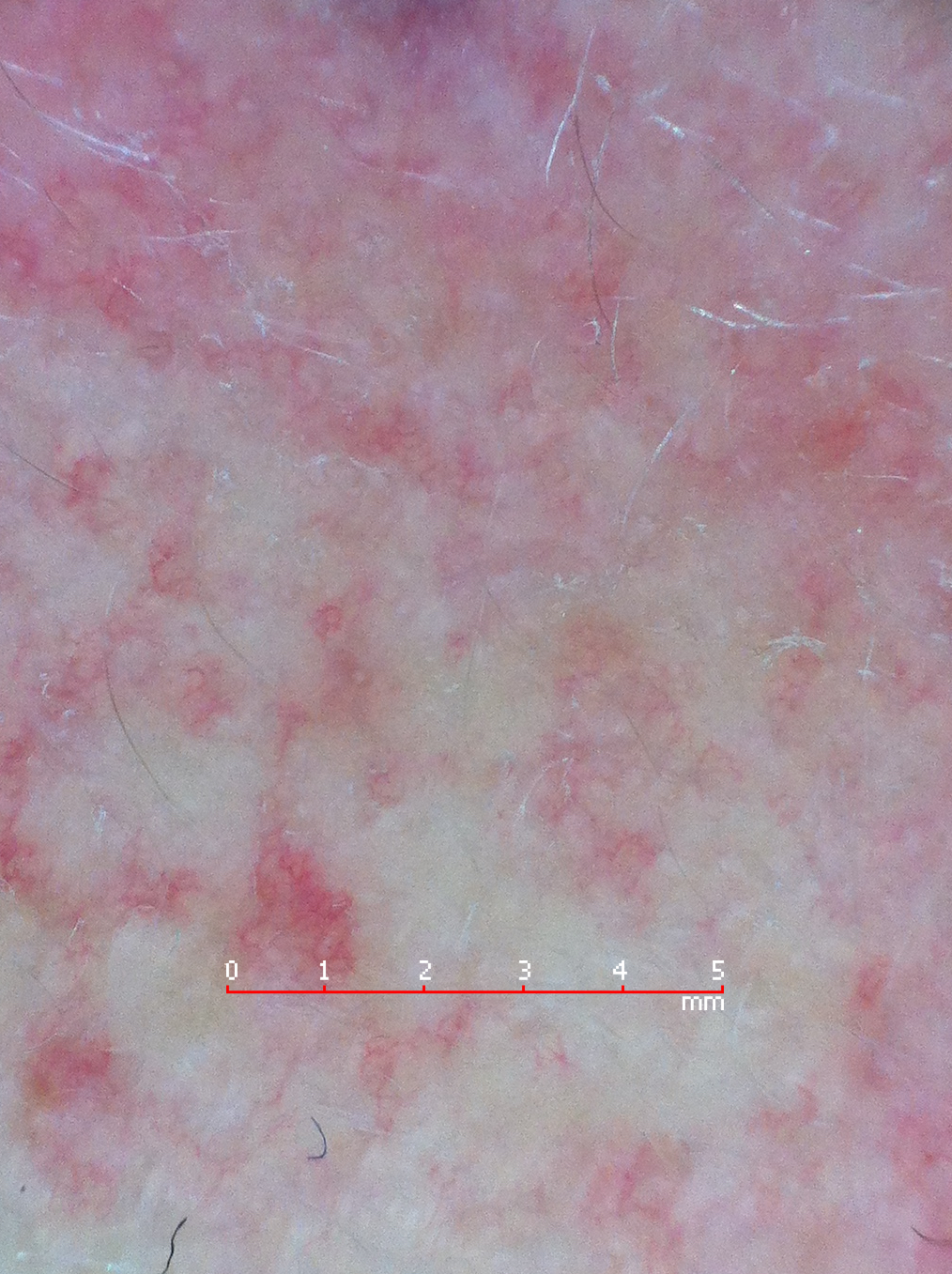
SCALP DONOR
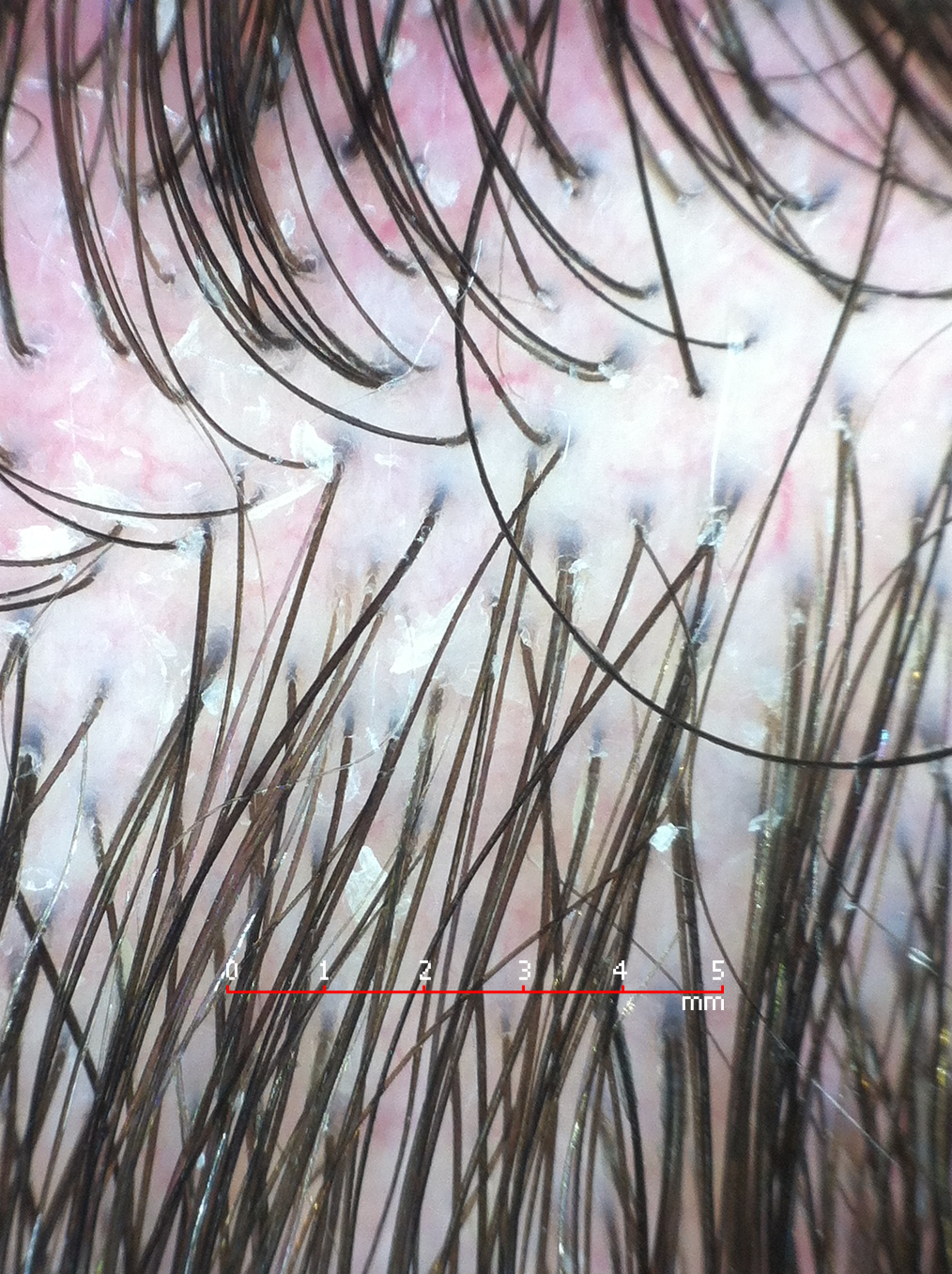
BEARD
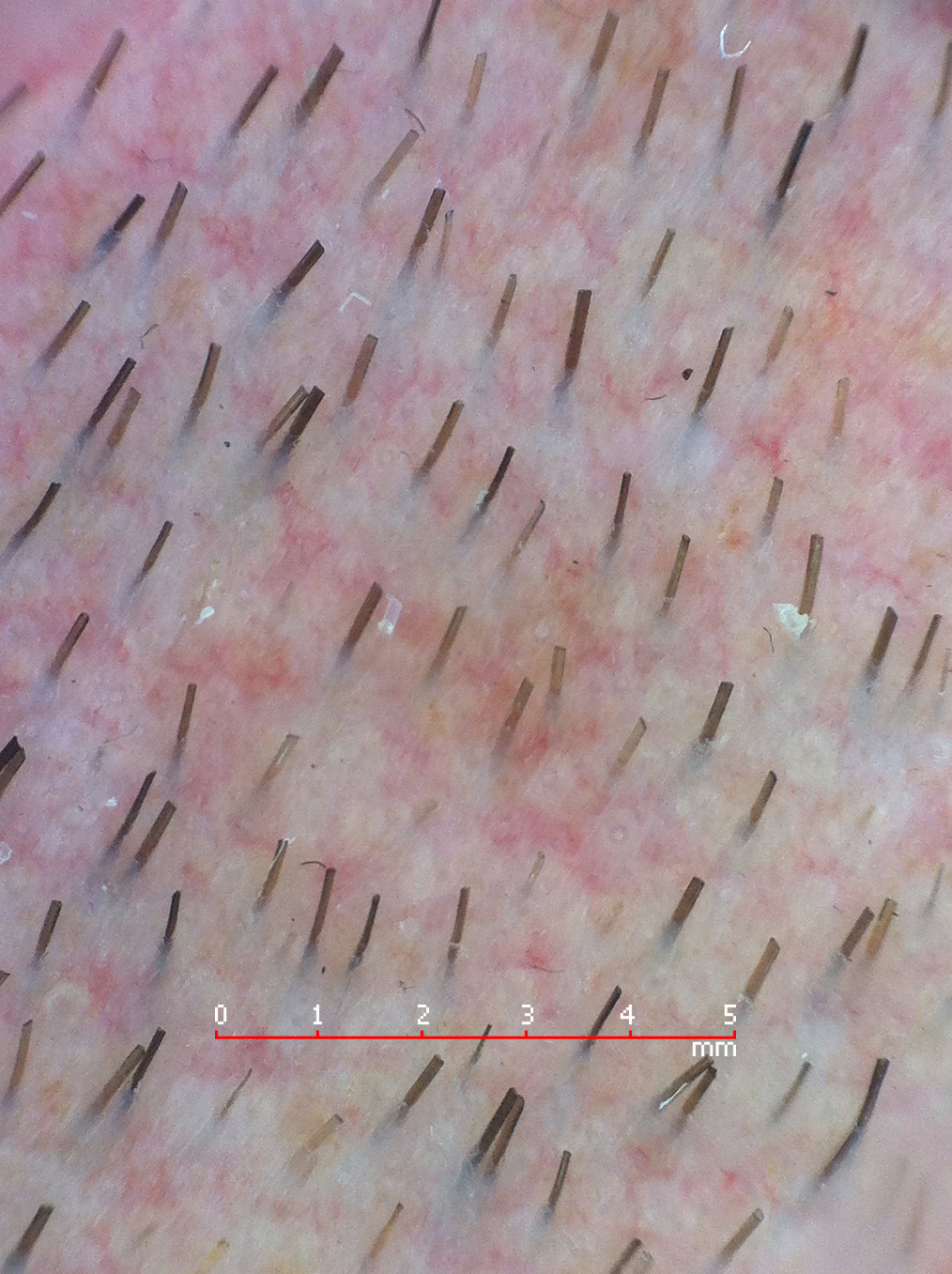
-
Glad to see there is interest in this thread. It's an important topic.
@Dutchie, I'd say that for about 30-35% of my consults I discourage undergoing hair restoration surgery. That doesn't mean, however, that there is no alternative. Between the various topical meds that exist and platelet-rich plasma (PRP) therapy (something I know that remains understandably controversial on this forum), there are numerous methods to improve a man's or woman's hair status.
-
Thanks, David!
He was also an instance of a patient being able to return to work and/or social activities a week to 10 days after his procedure.

-
Here's a one-year update of this patient after a 2331 follicular unit extraction (FUE) session with us.





-
Formulations are quite popular with patients and, in many cases, they make sense. So, we certainly make them available. Topical finasteride, for example, was shown to reduce scalp DHT levels 40% more that the pill form. When they performed serum draws on that patient population, finasteride was detected in the serum of those taking the pill form, but not in those using the topical version.
-
Reportedly, genes contribute less than 14% of explained variation in androgenetic alopecia (AGA) [Richards, et. al]. Since dietary changes may be the simplest starting point to preventing hair loss, this investigative study might be of interest to many of you.
Studying 354 men (ages 35-65), researchers found that frequent soy bean drink consumption proved slightly protective against moderate to severe male pattern baldness (MPB). Rich in isoflavones (leading to increased antioxidant levels) soy consumption demonstrated some protection against AGA.

-
For the curious folks, here is an interesting article that describes the mechanism by which caffeine can help slow hair loss. It's inhibition of the enzyme that converts testosterone to dihydrotestosterone (DHT, or the enemy of scalp hair) is caffeine's primary benefit.
Now, this doesn't mean that drinking copious amounts of espresso will stimulate hair growth. Rather it is caffeine in its topical form that can have this beneficial effect.

-
Here's an image of the patient's donor area. Hair is parted along the virgin scalp on the left and directly over the donor scar on the right.

-
Our office would like to wish you a happy holiday season and a healthy 2016.
We would also like to reflect on a wonderful year. I have posted an in-depth montage of the various patient transformations that took place in our office during this time period. Male and female patients benefited from surgical approaches (FUT and FUE) as well as non-surgical procedures (PRP and SMP) throughout the year.
In addition to the standard before/after pictures, various patients also volunteered to include video footage of themselves for prospective patients to also view.
On a personal note, I have grown to appreciate the candid dialogue on sites such as this more this year than ever before. Just like in a "healthy democracy," reason and level-headedness truly seems to prevail when patients' personal experiences with the various procedures and medical therapies shape each debate.
Happy New Year!
-
I have attached magnified images of this patient’s donor and recipient areas that were taken during our initial consultation together. As you can see, the prior transplant (performed at a different surgical clinic) left grafts in the recipient area that were originally spaced at a density that resulted in an unnatural-appearing pattern. The healthy caliber (thickness) of the transplanted hairs was inconsistent with the wide spacing (10-15 grafts/cm2) between them.
Different types of grafts should be distributed in different densities according to their number of hairs and the caliber of each hair shaft. In this example, transplanting at an average density of 35-40 grafts/cm2 throughout much of the frontal half resulted in a more natural-appearing fullness (as seen in the global before & after paired images).
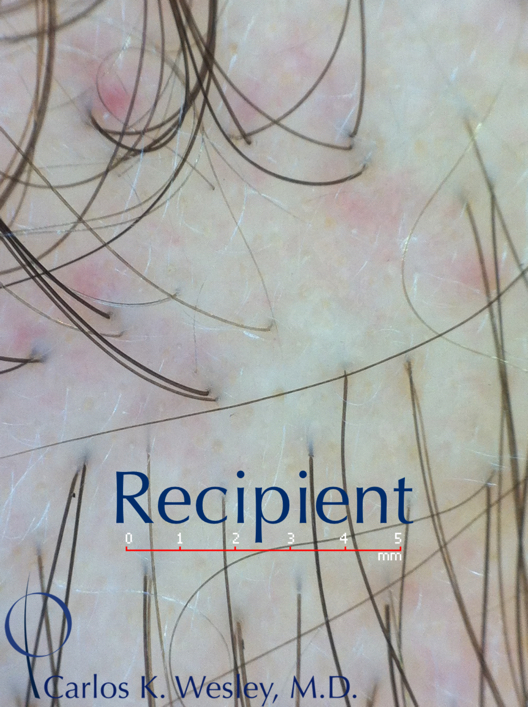
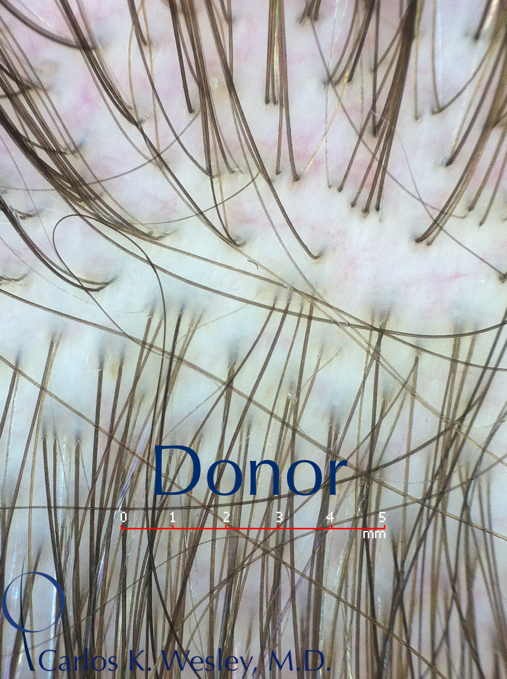
-
Here is this patient's donor scar in which a trichophytic closure was used.

-
Much is still being discovered regarding the effect of platelet-rich plasma (PRP) on human hair follicles. In our practice, we have observed that, when used as a holding solution, PRP can help increase the survival rate and caliber of transplanted grafts. We've also seen trends towards earlier transplanted hair growth when PRP is used as a graft holding solution.
An additional finding that has also been observed by other practices throughout the world is that PRP can help return some of the original hair color to follicles. PRP appears to stimulate melanocytes in hair follicles which, in turn, may help bring back some of the color to hairs that have become almost transparent over time.
Below, an example of a patient who underwent PRP mesotherapy in our office and a few of the hairs in this image are colorless prior to his treatments and then have more of their original brown coloration about 6 months later.

-
I appreciate your comments and I certainly agree that it's not a good idea to be packing too many grafts into the crown.
This patient's pattern addressed (but was not limited to) his crown. It actually focused more on his mid scalp region. The first image in the original post of this thread shows the general idea with the back border drawn with a black wax pencil - the concave arc that bends around in keeping with the eventual crown border extending beneath it. The last image pair in the original post also shows the general pattern borders planned as drawn with a wax pencil. The back border touches the vertex transition point - where the scalp begins a downward slope.
To better illustrate this idea, I have attached an intra-operative image of this patient. You can see that the surgical pattern extends well beyond his pre-existing hair into areas of future loss. This ensures that the transplanted hair pattern holds stable, even when the pre-existing hair is lost over the years.

Another patient in whom the mid scalp (not the crown) was treated with his future crown hair loss in mind can be seen below.

-
Ha! Yes, grateful, it most definitely is you!
Your comments (and those of the others on this thread) are very much appreciated. You had a positive outlook all throughout and your results reflect that! Enjoy the holiday season!
-
ESPN weighs in...
-
This 33-year-old patient simply wanted to preserve his current hair pattern, but add to its fullness. Preferring to wear a short hairstyle and having a limited donor hair reserve, he elected to have a follicular unit extraction (FUE) procedure with our team. A 0.8mm FUE punch was used to perform the harvest and platelet-rich plasma (PRP) and ACell Matristem was used as a holding solutions for the grafts while they were out of the body. The patient returned about one year after his FUE session for a follow-up.




-
Here is a video summary of the lecture I delivered at last week's ISHRS Scientific Meeting in Chicago. It provides an update on the status of piloscopic hair surgery as well as a few live surgical clips.
The password for viewing is "piloscopy"
-
Here is a video summary of the lecture I delivered at last week's ISHRS Scientific Meeting in Chicago. It provides an update on the status of piloscopic hair surgery as well as a few live surgical clips.
The password for viewing is "piloscopy"
-
Thanks for your comment, David!
Stig, great observation. For both my FUT AND FUE cases, patients are not required to shave their recipient areas. I've presented a few video examples of this in a previous thread.
Now, every physician is different, but in my hand it is certainly just as safe to not shave it down and let patients keep their recipeint hair at its normal length. It may be a bit faster to make the recipient sites as quickly as possible when the hair is shaven, but - aside from the slight ease of site making in the short term - I simply don't see a long-term benefit to the patient.
Much has to do with the physician's comfort zone and during my days of surgical training, all of my patients came in with their normal length recipient hair. They appreciated being able to return to work and social activities within 10 days (or even sooner). It does take a little longer to meticulously part the normal-length hair in order to create recipient sites within the pre-existing hairs, but it is well worth it for patient recovery. In addition, if the hair is wet preoperatively, it's very easy to see the areas of future loss and plan your recipient area accordingly.
-
-
Thank you all for letting me know! We've updated the privacy of the video (seen above in this thread) so that it is now public and able to be viewed by all.
-
Thanks, all, for the comments. I do use a hand-held motorized punch for all of my FUE cases. Rather than outsourcing the labor, I perform all of my own FUE harvests along with my staff (hence, the blisters on my fingers!).
Here is the patient's donor area on postoperative day #1 as well as a few months after his FUE session with me. @David: Is there a way to move this thread into the FUE section (where it should more appropriately be located)? Thanks!

-
This patient lives in the area. We could certainly reach out to him to see whether or not he is willing to communicate with other prospective patients. Please email info@drcarloswesley.com



Carlos K. Wesley (NYC): Megasession?
in Results Posted by Leading Hair Restoration Clinics
Posted
Hi, Stig. I agree that sessions continue to grow (for better or for worse). Definitions, however, don't always evolve at the same rate. Surprisingly, the International Society of Hair Restoration Surgery (ISHRS) still defines a mega session on their site as over 2000 grafts!
7 Innovative Techniques in Hair Transplantation | International Society of Hair Restoration Surgery